Spanish missions in California/Gallery: Difference between revisions
imported>Robert A. Estremo No edit summary |
imported>Robert A. Estremo (add image) |
||
| (13 intermediate revisions by the same user not shown) | |||
| Line 3: | Line 3: | ||
<gallery perrow=3 widths=300px heights=250px> | <gallery perrow=3 widths=300px heights=250px> | ||
Image:California Indians catching salmon.jpg|{{California Indians catching salmon.jpg/credit}}<br />California Indians catching salmon. | Image:California Indians catching salmon.jpg|{{California Indians catching salmon.jpg/credit}}<br />California Indians catching salmon. | ||
Image:San Diego Bay 1603.gif|{{San Diego Bay 1603.gif/credit}}<br />A map showing San Diego Bay, made in Spain in 1603 from charts drawn by Vizcaíno's cartographer. | |||
Image:Franciscan coat-of-arms.jpg|{{Franciscan coat-of-arms.jpg/credit}}<br />The Franciscan coat of arms, a prominent feature of the décor of the early California missions. | |||
Image:Carlos III Rey de Espana.jpg|{{Carlos III Rey de Espana.jpg/credit}}<br />A portrait of Carlos III, the reigning Spanish monarch from 1759 to 1788. | |||
Image:Discovery of Old San Francisco Bay.jpg|{{Discovery of Old San Francisco Bay.jpg/credit}}<br />Gaspar de Portolà sights [[San Francisco Bay Area|San Francisco Bay]], November 4, 1769. | |||
Image:Serra in San Diego May 19 1770.jpg|{{Serra in San Diego May 19 1770.jpg/credit}}<br/>''The Ship! The Ship! California is saved!'' Father Serra rejoices at the sight of the packet ship ''San Antonio'' entering San Diego Bay on March 19, 1770 with desperately-needed food and supplies. The ''San Carlos'' rests at anchor just offshore.<ref>Engelhardt 1920, pp. 35-37</ref> | |||
Image:CHS-1909.jpg|{{CHS-1909.jpg/credit}}<br />An engraved portrait of Fr. Junípero Serra, O.F.M. The well-known and beloved missionary died in Monterey, California, on August 28, 1784. | |||
Image:Jose de Galvez.jpg|{{Jose de Galvez.jpg/credit}}<br />A rare portrait of Visitador General José de Gálvez y Gallardo, marqués de Sonora, completed shortly before his death ''circa'' 1787. | |||
Image:Patwin earth lodges.jpg|{{Patwin earth lodges.jpg/credit}}<br />Patwin earth lodges. | |||
Image:Costanoans fighting Spanish soldier 1791.jpg|{{Costanoans fighting Spanish soldier 1791.jpg/credit}}<br />Costanoans fight a Spanish soldier in 1791. | Image:Costanoans fighting Spanish soldier 1791.jpg|{{Costanoans fighting Spanish soldier 1791.jpg/credit}}<br />Costanoans fight a Spanish soldier in 1791. | ||
Image:A native of the Monterey area.jpg|{{A native of the Monterey area.jpg/credit}}<br />A native of the Monterey area. The Costanoan people spoke eight languages, each of which is considered to designate a different tribelet. | Image:A native of the Monterey area.jpg|{{A native of the Monterey area.jpg/credit}}<br />A native of the Monterey area. The Costanoan people spoke eight languages, each of which is considered to designate a different tribelet. | ||
| Line 15: | Line 23: | ||
Image:Tule boat.jpg|{{Tule boat.jpg/credit}}<br />The Ohlone, Coast Miwok, and Bay Miwok all utilized utilized tule in the construction of boats for use in the San Francisco Bay estuary. Northern groups of Chumash also used tule to build reed fishing canoes.<ref>Jones and Klar, 307</ref> | Image:Tule boat.jpg|{{Tule boat.jpg/credit}}<br />The Ohlone, Coast Miwok, and Bay Miwok all utilized utilized tule in the construction of boats for use in the San Francisco Bay estuary. Northern groups of Chumash also used tule to build reed fishing canoes.<ref>Jones and Klar, 307</ref> | ||
Image:Mission Delores 1816 Stick Game.jpg|{{Mission Delores 1816 Stick Game.jpg/credit}}<br />Indians play a stick game at Mission Dolores. | Image:Mission Delores 1816 Stick Game.jpg|{{Mission Delores 1816 Stick Game.jpg/credit}}<br />Indians play a stick game at Mission Dolores. | ||
Image:The Zacatecan Franciscans Land at Monterey - January 15, 1833 - AH.jpg|{{The Zacatecan Franciscans Land at Monterey - January 15, 1833 - AH.jpg/credit}}<br />Governor José Figueroa and the Zacatecan Franciscans land at Monterey, January 15, 1833. | |||
Image:CHS-46640.jpg|{{CHS-46640.jpg/credit}}<br/>The [[San Antonio de Pala Asistencia]] (or "Pala Mission" as it is known today) ''circa'' 1900. Pala is architecturally unique among all of the Franciscan missions in that it boasts the only completely freestanding campanile, or "bell tower," in all of Alta California. It is also the only outpost that has ministered without interruption to the Mission Indians for whom it was originally built since its inception, and is the only "sub-mission" still intact.<ref name="carillo11">Carillo, p. 11</ref> | Image:CHS-46640.jpg|{{CHS-46640.jpg/credit}}<br/>The [[San Antonio de Pala Asistencia]] (or "Pala Mission" as it is known today) ''circa'' 1900. Pala is architecturally unique among all of the Franciscan missions in that it boasts the only completely freestanding campanile, or "bell tower," in all of Alta California. It is also the only outpost that has ministered without interruption to the Mission Indians for whom it was originally built since its inception, and is the only "sub-mission" still intact.<ref name="carillo11">Carillo, p. 11</ref> | ||
Image:CHS-2097.jpg|{{CHS-2097.jpg/credit}}<br/>[[Mission San Luis Rey de Francia]] is home to with the first Peruvian Pepper Tree (''Schinus molle'') planted in California in 1830, visible at right behind the arches in the above photograph (taken ''circa'' 1900).<ref> | Image:CHS-2097.jpg|{{CHS-2097.jpg/credit}}<br/>[[Mission San Luis Rey de Francia]] is home to with the first Peruvian Pepper Tree (''Schinus molle'') planted in California in 1830, visible at right behind the arches in the above photograph (taken ''circa'' 1900).<ref>Young, p. 18</ref> | ||
Image: | Image:Cemetery Entrance.jpg|{{Cemetery Entrance.jpg/credit}}<br />Stone "skull and crossbone" carvings denote the cemetery entrance at Mission Santa Barbara. Actual skulls and bones were long used to mark the entrances to Spanish cemeteries (''campo santos''). The practice, dating back many centuries, led to the symbol eventually becoming associated with the concept of death. | ||
Image:Mission San Buenaventura olive press.jpg|{{Mission San Buenaventura olive press.jpg/credit}}<br />A replica of an olive press at Mission San Buenaventura. | |||
Image:USNS Mission Capistrano.jpg|{{USNS Mission Capistrano.jpg/credit}}Between 1944 and 1945, twenty-seven [[USNS Mission Buenaventura (T-AO-111)|''Mission Buenaventura'']]-class fleet oilers were built (two additional vessels were converted to distilling ships after their keels had been laid).<ref>Fleet Oiler (AO) Photo Index</ref> Many of the ships, such as the [[USNS Mission Capistrano (T-AO-112)|USNS ''Mission Capistrano'' (T-AO-112)]] shown above, served with the United States Navy during [[World War II]] and on into the [[Cold War]]. | Image:USNS Mission Capistrano.jpg|{{USNS Mission Capistrano.jpg/credit}}Between 1944 and 1945, twenty-seven [[USNS Mission Buenaventura (T-AO-111)|''Mission Buenaventura'']]-class fleet oilers were built (two additional vessels were converted to distilling ships after their keels had been laid).<ref>Fleet Oiler (AO) Photo Index</ref> Many of the ships, such as the [[USNS Mission Capistrano (T-AO-112)|USNS ''Mission Capistrano'' (T-AO-112)]] shown above, served with the United States Navy during [[World War II]] and on into the [[Cold War]]. | ||
</gallery> | </gallery> | ||
==Notes== | ==Notes and references== | ||
{{reflist}} | {{reflist}} | ||
Latest revision as of 15:03, 25 April 2018
(PD) Drawing: A.B. Dodge
Gaspar de Portolà sights San Francisco Bay, November 4, 1769.(PD) Drawing: Alexander Harmer
The Ship! The Ship! California is saved! Father Serra rejoices at the sight of the packet ship San Antonio entering San Diego Bay on March 19, 1770 with desperately-needed food and supplies. The San Carlos rests at anchor just offshore.[1](PD) Painting: Louis Choris
The Ohlone, Coast Miwok, and Bay Miwok all utilized utilized tule in the construction of boats for use in the San Francisco Bay estuary. Northern groups of Chumash also used tule to build reed fishing canoes.[2](PD) Photo: Charles C. Pierce
The San Antonio de Pala Asistencia (or "Pala Mission" as it is known today) circa 1900. Pala is architecturally unique among all of the Franciscan missions in that it boasts the only completely freestanding campanile, or "bell tower," in all of Alta California. It is also the only outpost that has ministered without interruption to the Mission Indians for whom it was originally built since its inception, and is the only "sub-mission" still intact.[3](PD) Photo: Charles C. Pierce
Mission San Luis Rey de Francia is home to with the first Peruvian Pepper Tree (Schinus molle) planted in California in 1830, visible at right behind the arches in the above photograph (taken circa 1900).[4](CC) Photo: Robert A. Estremo
Stone "skull and crossbone" carvings denote the cemetery entrance at Mission Santa Barbara. Actual skulls and bones were long used to mark the entrances to Spanish cemeteries (campo santos). The practice, dating back many centuries, led to the symbol eventually becoming associated with the concept of death.(PD) Photo: Joe Radigan MACM / United States Navy
Between 1944 and 1945, twenty-seven Mission Buenaventura-class fleet oilers were built (two additional vessels were converted to distilling ships after their keels had been laid).[5] Many of the ships, such as the USNS Mission Capistrano (T-AO-112) shown above, served with the United States Navy during World War II and on into the Cold War.
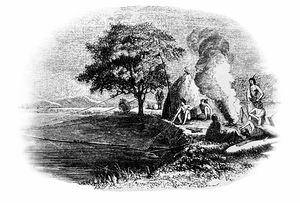

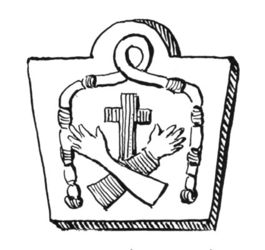
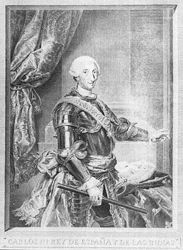
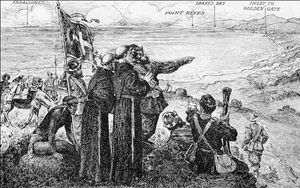
![(PD) Drawing: Alexander Harmer The Ship! The Ship! California is saved! Father Serra rejoices at the sight of the packet ship San Antonio entering San Diego Bay on March 19, 1770 with desperately-needed food and supplies. The San Carlos rests at anchor just offshore.[1]](/wiki/images/thumb/b/b5/Serra_in_San_Diego_May_19_1770.jpg/141px-Serra_in_San_Diego_May_19_1770.jpg)
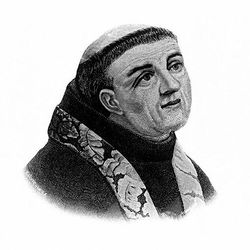
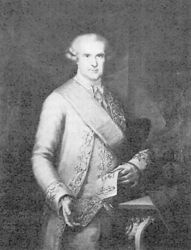

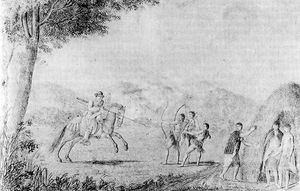
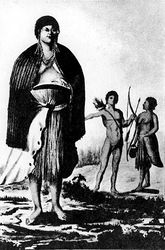

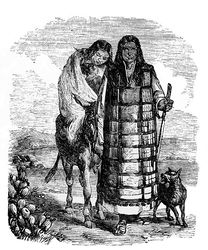
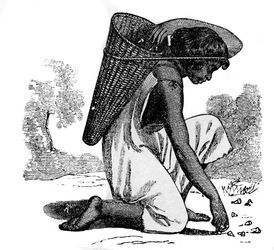
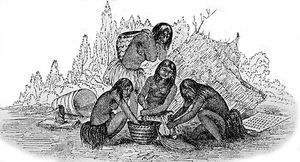
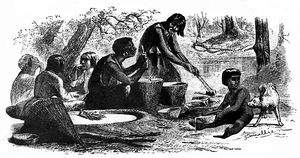
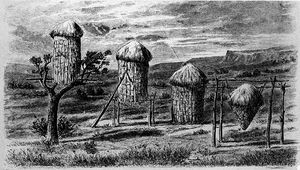
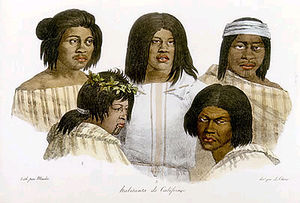
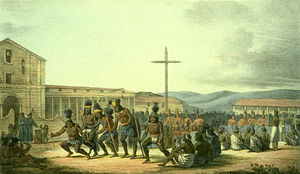
![(PD) Painting: Louis Choris The Ohlone, Coast Miwok, and Bay Miwok all utilized utilized tule in the construction of boats for use in the San Francisco Bay estuary. Northern groups of Chumash also used tule to build reed fishing canoes.[2]](/wiki/images/thumb/6/6d/Tule_boat.jpg/300px-Tule_boat.jpg)
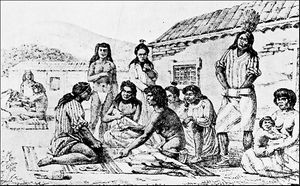

![(PD) Photo: Charles C. Pierce The San Antonio de Pala Asistencia (or "Pala Mission" as it is known today) circa 1900. Pala is architecturally unique among all of the Franciscan missions in that it boasts the only completely freestanding campanile, or "bell tower," in all of Alta California. It is also the only outpost that has ministered without interruption to the Mission Indians for whom it was originally built since its inception, and is the only "sub-mission" still intact.[3]](/wiki/images/thumb/7/7a/CHS-46640.jpg/300px-CHS-46640.jpg)
![(PD) Photo: Charles C. Pierce Mission San Luis Rey de Francia is home to with the first Peruvian Pepper Tree (Schinus molle) planted in California in 1830, visible at right behind the arches in the above photograph (taken circa 1900).[4]](/wiki/images/thumb/f/fa/CHS-2097.jpg/199px-CHS-2097.jpg)
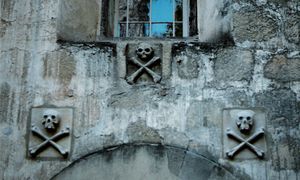

![(PD) Photo: Joe Radigan MACM / United States Navy Between 1944 and 1945, twenty-seven Mission Buenaventura-class fleet oilers were built (two additional vessels were converted to distilling ships after their keels had been laid).[5] Many of the ships, such as the USNS Mission Capistrano (T-AO-112) shown above, served with the United States Navy during World War II and on into the Cold War.](/wiki/images/thumb/1/11/USNS_Mission_Capistrano.jpg/300px-USNS_Mission_Capistrano.jpg)